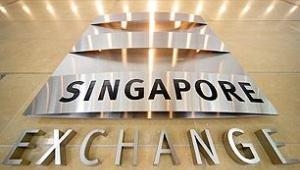
Here's the potential impact of new regulatory measures on SGX revenue
Is there a cause for worry?
According to CIMB, MAS and SGX intend to implement a series of measures to strengthen the securities market. The measures were partly the result of an existing consultation and partly in reaction to a series of penny stock manipulations in October last year.
To soften the blow to retail participants who will have to cough up collateral and not have 1ct-stocks to trade, SGX has tweaked its securities clearing fees structure. Separately, it has tweaked its pricing for post-trade services.
Here's more:
Downside from securities clearing fees from retail trades. SGX intends to lower the securities clearing fee from 4bp to 3.25bp of contract values from 2 May 2014. Right now, the pricing structure is 4bp for all but with maximum clearing fees capped at S$600, i.e. if trade values are >S$1.5m, then the effective clearing rate is lower.
The ones to benefit most will be retail investors whose typical trade sizes are <S$1.5m. We estimate that though retail trades tend to contribute 40-50% of overall SGX securities value traded, SGX’s securities clearing fees from retail trades accounted for an average of 58% of total securities clearing fees in FY13.
With the implementation of this new pricing structure, securities clearing fees from retail trades stand to fall 19% in FY15. This is not a small negative impact.
Upside from institutional clearing fees and post-trade fees. The offset from lower retail securities clearing fees will be higher clearing fees from institutional trades (contract values exceeding S$1.5m), due to the removal of the S$600 cap on securities clearing fees for contracts of S$1.5m or more.
Currently, trades of more than S$1.5m will pay a maximum S$600 clearing fee. We estimate that institutions paid an average clearing rate of 1.6bp per trade in the last six quarters. So, a removal of the S$600 cap will be an actual hike in effective clearing fees of ~100%.
We estimate that SGX’s securities clearing fees from institutional trades account for an average of 42% of total securities clearing fees in FY13. Other than this, there is likely to be a small positive impact from higher post-trade fees as well. Both of these will counter the lower retail clearing fees.
Sensitivity study. Is there a reason to be worried that SGX’s revenues will be affected because of all these proposed measures and the tweak in clearing fee structure? We don’t think so. We use reported market data in the last six quarters to paint the picture.
Historically, the split between retail and institutional trades has been 50-50 although the penny stock saga inflated the proportion of retail trades in 1HFY14. We put less attention on 1QFY14 and 2Q FY14 data because retail activity was inflated by the penny stock saga. SGX currently books an effective clearing rate 8bp on retail trades (4bp each by the buyer and the seller).
We estimate that SGX books a much lower effective average clearing rate (3.2bp) for institutional trades because of the capped trade rule; this translates to an effective 1.6bp clearing fee per institutional trade. This will effectively go up to 3.25bp after 2 May 2014.
























 Advertise
Advertise










